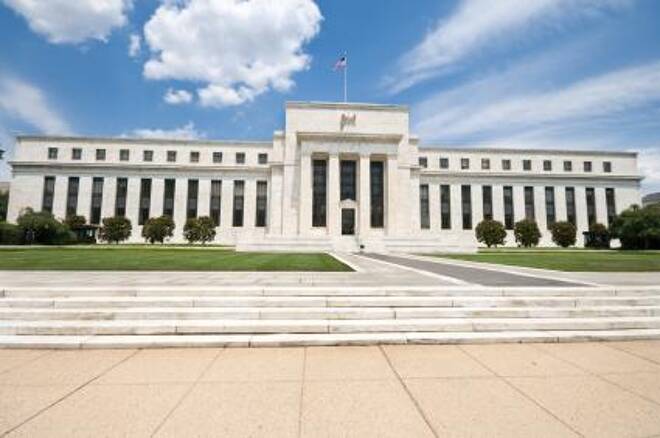Advertisement
Advertisement
PBOC Devaluation Threat Means Fed Will Scrap September Rate Hike
By:
Last week’s financial markets opened with the focus on U.S. interest rates and whether the economy is strong enough for the U.S. Federal Reserve to start
Last week’s financial markets opened with the focus on U.S. interest rates and whether the economy is strong enough for the U.S. Federal Reserve to start raising interest rates for the first time since 2006. Atlanta Fed President Dennis Lockhart said the Fed is close to raising interest rates. However, Federal Reserve vice chairman Stanley Fischer suggested a September rate hike is not a done deal.
Lockhart said, “I think the point of ‘liftoff’ is close. The economy has made great gains and is approaching an acceptable normal…conditions are no longer extraordinary.” He also added, “I remain very disposed to September being a possible date for a liftoff decision.” He did emphasize that he expected a gap of at least one policy meeting between subsequent increases. “In my mind gradual is going to mean something less frequent than every meeting”, he said.
Fischer, on the other hand, saw things a little differently. He suggested the central bank will not make its first interest rate hike since the financial crisis next month. Fischer told Bloomberg TV, “The interesting situation is which we are is that employment has been rising pretty fast relative to previous performance and yet inflation is very low.” He then added, “And the concern about the situation is not to move before we see inflation as well as employment returning to more normal levels.”
The price action on the foreign currency markets suggested that the market believed Fischer more than Lockhart. After all, Fischer is seen as a powerful number-two behind Fed Chairwoman Janet Yellen. The U.S. Dollar weakened on the news, triggering strong rallies by the British Pound and Euro. Gold and stock markets also benefited from Fischer’s comments because they meant that interest rates would likely remain lower until possibly December.
On Tuesday, turmoil hit the financial markets with the surprise move by the People’s Bank of China (PBOC) to devalue the yuan three consecutive sessions with perhaps more to come. With this startling move by China’s central bank, the odds of a rate hike by the Fed in September are now set at 50/50.
On August 11, the PBOC moved the mid-point of the yuan 1.9% lower against the U.S. currency. This was the biggest one-day drop since China’s dual currency system more than two decades ago. The central bank followed its initial action with another 1.6% cut on August 12. After briefly intervening to prop up the yuan on Wednesday, it guided its currency lower for a third day on August 13.
China made this move because the strength in the U.S. Dollar was hurting its exports. However, a quick boost in China’s exports could wreak havoc for U.S. export competitiveness. China’s devaluation is likely to help its ability to export, but at the expense of U.S. exporters.
With other countries like Canada, New Zealand and Australia cutting rates to weaken their currencies and boost exports, the move by China may encourage emerging markets to become more aggressive in protecting their export markets. While it is highly unlikely the U.S. Fed will cut rates to weaken the dollar, it will likely postpone a rate hike in September because it has to protect U.S. exports. At this time, it appears the Fed will have to refrain from any decision that will strengthen the Greenback.
What makes the foreign currencies the main focus at this time will be the presence of uncertainty and increased volatility because China may continue to weaken the yuan. And if it does then we could be looking at a substantially overvalued U.S. Dollar.
About the Author
James Hyerczykauthor
James is a Florida-based technical analyst, market researcher, educator and trader with 35+ years of experience. He is an expert in the area of patterns, price and time analysis as it applies to futures, Forex, and stocks.
Did you find this article useful?
Latest news and analysis
Advertisement
